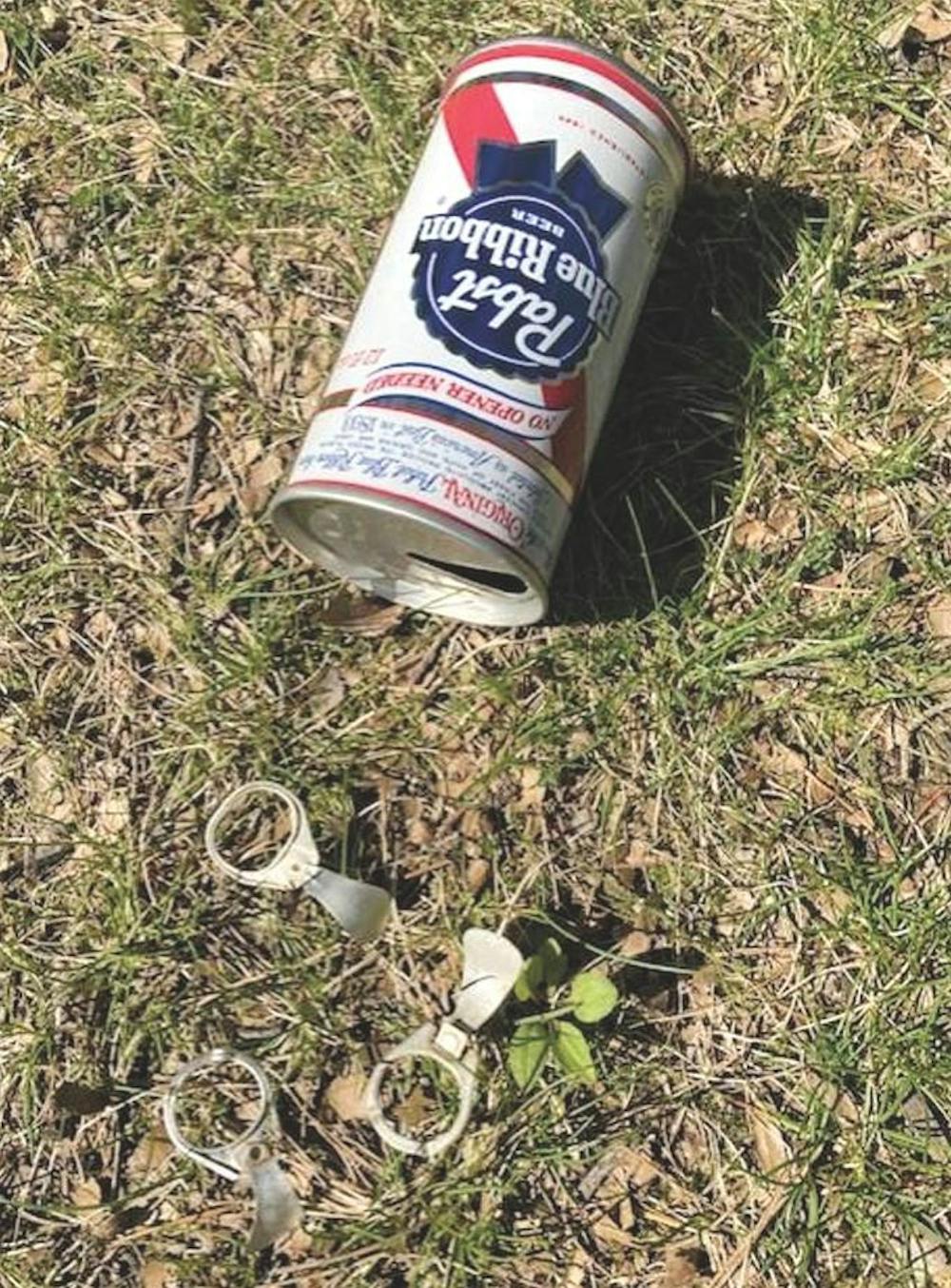Spring clean-up around our home includes raking the edges of the lawn near the woods. Sometimes I find small pieces of brown or clear glass from broken bottles glinting in the sunlight. I have also found a few beverage can pull-tabs, or pop-tops. These were kept as reminders of the past, then became the subject of this story.
How old are these tabs? Since they first showed up on cans in the early 1960s and were discontinued by 1980, they are between 45 and 60 years old.
Many feet still get cut on broken glass, but not by sharp aluminum pull-tabs. Jimmy Buffett sings of these in his 1977 hit Margaritaville: “I blew out my flip flop, stepped on a pop-top, cut my heel, and had to cruise on back home.”
Ermal (Ernie) Fraze invented the pop-top can. He started looking for a better way to open a can, after not having a can opener nearby at a picnic in 1959. Many attempts had been made by others, but none were successful. Fraze, owner of Dayton Reliable Tool and Manufacturing Company in Ohio, finally devised a rivet that was formed from aluminum in the can’s top. The little lever, and later the ring pull-tab, was forced down onto the rivet by a cold-welding process called staking.
The company’s first customer, Pittsburgh Brewing Co., maker of Iron City Beer, ordered 100,000 cans in 1962.
Pop-tops led to more littering and caused injuries when people stepped on them. Early ones with just a tab were called ‘finger rippers’ as many people cut themselves while opening the cans. Some bartenders turned the cans upside down and used a reliable, faster and safer ‘church key’ to open them instead. In 1965, a pull ring was attached to the pop-top and these issues went away. They became a choke hazard when some drinkers dropped the tab inside the can after opening it. Most stayed in the can, but some got stuck inside the drinker’s throat and others ended up in stomachs.
The added rings led to other uses of the pop-tops. Bracelets and necklaces that included them were fashionable in some places. Decoration chains ended up on Christmas trees and other places. College students had contests at parties or in bars to see which group of drinkers could make the longest chain. Clothing, such as hats, vests and dresses, was fashioned from them or decorated with them. Pop-tops were also a detriment to some wildlife when body parts got stuck in the ring, leading to injuries or death.
All this excitement and concern ended in 1975 when the Reynolds Metal Company patented the StaTab, which remained on the cans. They were introduced on products of the Falls City Brewing Company, Louisville, Kentucky, and are still in use today.
People have saved tabs for recycling, providing funds for youth groups or church projects but the value of aluminum at recycling centers varies. In June, a pound of aluminum tabs (about 1,700), per LP PADNOS Recycling, was worth eight cents. If you are involved in tab collecting, it would be wise to hang on to them until the value increases. Maybe get creative, using different styles and colors in a piece of artwork. The results would not require hundreds of tabs and could be sold for more than eight cents at a yard or craft sale.












